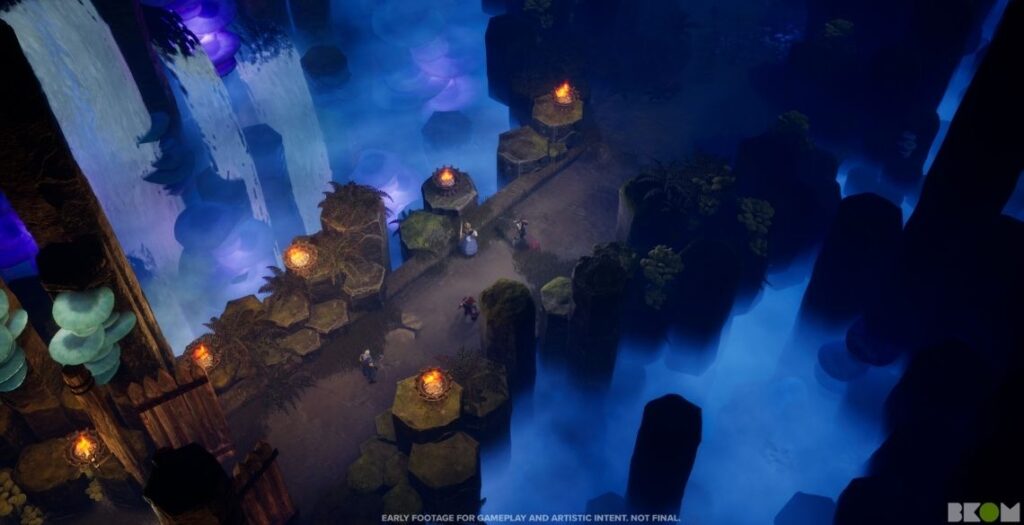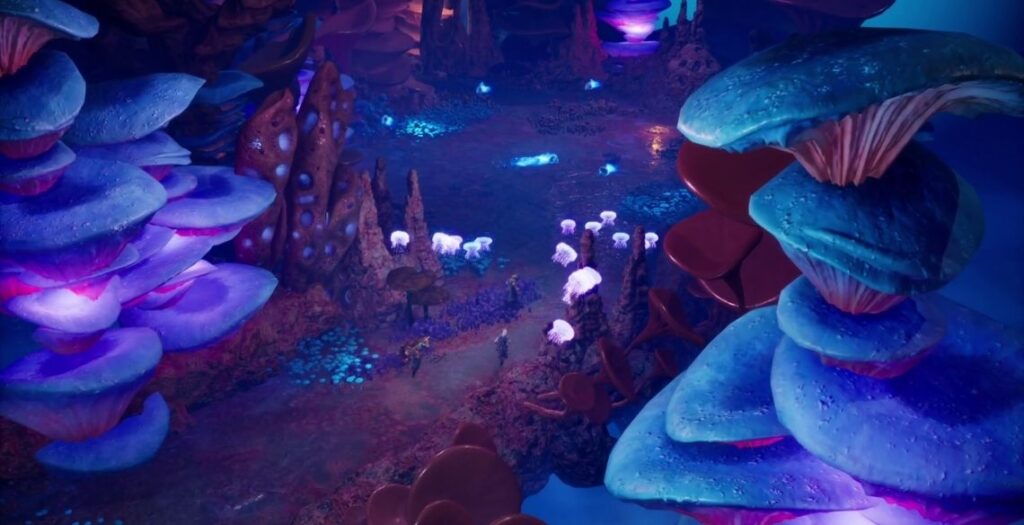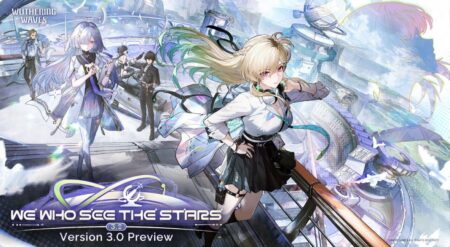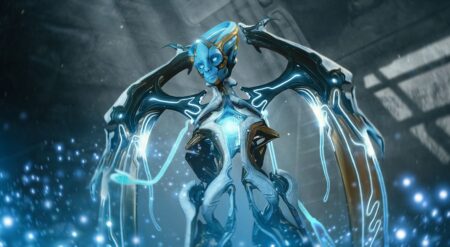Pathfinder: Abomination Vaults isn’t just an ARPG with a familiar name slapped on it. BKOM Studios is taking one of the most well-known adventure paths in the Pathfinder universe and rebuilding it as a fully cooperative, squad-based dungeon crawler. It’s streamlined, tactical, and accessible, with a design philosophy that prioritizes smart systems without overwhelming players.
At GDC, we saw a hands-off preview of the game, the first hack-and-slash ARPG in the Pathfinder universe, and it jumps right into the action. Based on the Abomination Vaults campaign from Pathfinder Second Edition, players venture deep into Gauntlight Keep to confront Belcorra Haruvex, a once-defeated sorceress who’s returned with an even more monstrous army.
One of the most exciting design choices in Pathfinder: Abomination Vaults is that even in single-player, you control a full party of four heroes. The lineup includes Amiri the Barbarian, Kyra the Cleric, Harsk the Ranger, and Ezren the Wizard—each drawn from the core Pathfinder cast. Players can freely switch between heroes at any time or assign them to AI control. In co-op, friends can jump in locally or online, taking over any hero at any point. The shared-screen co-op setup is intuitive and smooth, making it easy to play casually or tactically with others.
“We don’t want you to feel like you made a bad choice.”

Game director Steve Wark emphasized that Pathfinder: Abomination Vaults for design was rooted in giving players freedom. The team wanted to build something that felt powerful, but also forgiving. “We don’t want you to feel like you made a bad choice,” he explained. “We just want you to discover another cool thing.”
Each hero starts with a distinct identity, but their builds can evolve through multiple class paths. Amiri might grow into a dragon-themed powerhouse or pivot to a more support-focused ancestral warrior. Ezren can lean into elemental magic, utility, or close-quarters combat with a Protean twist. Players upgrade gear through a simple, town-based system that avoids the complexity of spreadsheets and heavy optimization. NPCs like blacksmiths and alchemists help handle crafting and upgrades in a way that keeps the momentum going.
Controls are consistent across all heroes, so once you’ve learned the basics, you can jump between characters without having to relearn mechanics. Whether you’re hurling fire as Ezren or swinging dual axes as Harsk, the inputs remain the same, which helps streamline the party-based format even further.
The dungeon itself is massive, featuring ten biome-diverse levels full of environmental hazards, puzzles, and enemies. While the layout is rooted in the original campaign, BKOM has added new twists to keep returning Pathfinder players surprised. Some of this comes through narrative changes, while other moments involve reimagined boss fights, puzzles, and trap mechanics.
Pathfinder: Abomination Vaults makes one of the densest TTRPGs accessible to new players.

Boss fights look particularly fun in Pathfinder: Abomination Vaults. They’re designed as party challenges, encouraging players to coordinate skills, time their combos, and leverage each hero’s strengths. Some enemies are immune to control effects unless staggered first, and there’s a visual interface to help players identify and execute synergy-based combos. It’s a system that encourages teamwork but doesn’t punish experimentation.
Outside of combat, the town of Otari provides a narrative break where characters interact with NPCs, make decisions, and engage in small relationship-building moments. The dialogue options we saw were tied to the currently active hero, giving the party a range of voices and emotional tones. Some of these choices lead to side quests or minor story branches that personalize the campaign while keeping the main narrative on track.
Despite coming from one of the densest tabletop systems out there, Pathfinder: Abomination Vaults feels agile and welcoming. It doesn’t strip down the essence of Pathfinder, but it also doesn’t expect players to walk in with decades of tabletop experience. As Wark put it, “If you’re familiar with ARPGs, you’re good. This is where you can learn what makes Pathfinder cool without feeling like you need a character sheet and a rulebook.”
I came in expecting something niche or overwhelming. What I found was a dungeon crawler that’s smart, inclusive, and designed for playgroups of all types. It’s easy to get into, fun to explore, and filled with options for anyone who wants to make their own party dynamic work. And above all else, it looks like a blast.
Pathfinder: Abomination Vaults release is to be announced.







